
Students discuss German Christmas traditions and the differences between a traditional U.S. Christmas and a German Christmas
- Subject:
- Languages
- Material Type:
- Activity/Lab
- Author:
- Shawn Moak
- Mimi Fahnstrom
- Amber Hoye
- Date Added:
- 04/21/2022

Students discuss German Christmas traditions and the differences between a traditional U.S. Christmas and a German Christmas

In this activity, students will discuss what they look for in a career and what their dream job is.They will also describe what people with different careers do at work and what kind of personalities do well in these jobs.

This course focuses on main currents in contemporary German literary and visual culture. Taking Nietzsche’s thought as a point of departure, students will survey the dialectics of tradition and modernity in both Germany and other European countries, particularly the UK, France, Denmark, and Poland. Primary works are drawn from literature, cinema, art, and performance, including works by Peter Sloterdijk, Thomas Vinterberg, and Michel Houellebecq.
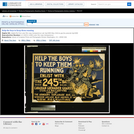
Poster shows German soldiers fleeing amidst explosions. Title from item.
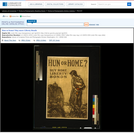
Poster showing a woman clutching an infant as a German soldier with bloody hands approaches. No. 9-B.
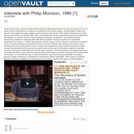
At age twenty-seven, physicist Philip Morrison joined the Manhattan Project, the code name given to the U.S. government's covert effort at Los Alamos to develop the first nuclear weapon. The Manhattan Project was also the most expensive single program ever financed by public funds. In this video segment, Morrison describes the charismatic leadership of his mentor, J. Robert Oppenheimer, and the urgency of their mission to manufacture a weapon 'which if we didn't make first would lead to the loss of the war." In the interview Morrison conducted for War and Peace in the Nuclear Age: 'Dawn,' he describes the remote, inaccessible setting of the laboratory that operated in extreme secrecy. It was this physical isolation, he maintains, that allowed scientists extraordinary freedom to exchange ideas with fellow physicists. Morrison also reflects on his wartime fears. Germany had many of the greatest minds in physics and engineering, which created tremendous anxiety among Allied scientists that it would win the atomic race and the war, and Morrison recalls the elaborate schemes he devised to determine that country's atomic progress. At the time that he was helping assemble the world's first atomic bomb, Morrison believed that nuclear weapons 'could be made part of the construction of the peace.' A month after the war, he toured Hiroshima, and for several years thereafter he testified, became a public spokesman, and lobbied for international nuclear cooperation. After leaving Los Alamos, Morrison returned to academia. For the rest of his life he was a forceful voice against nuclear weapons.
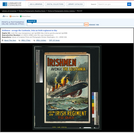
Poster showing the Lusitania in flames and sinking, with people in the water and lifeboats in the foreground. Title from item. Wt. P. 110 - 7,500. 5/'15.
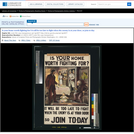
Poster showing a family at home, surprized by German soldiers bearing bayonets. Title from item. P 661.
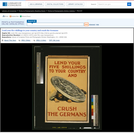
Poster showing a German soldier crushed by a monumental coin. Poster no. 23. W. 6172 40M-7/15. Title from item.

The rise and fall of National Socialism is one of the most intensively-studied topics in European history. Nevertheless, after more than half a century, popular views of Nazism in the media and among the public remain simplistic-essentialized by equal parts fascination and horror. Adolf Hitler, for instance, is often portrayed as an evil genius of supernatural ability; while the Nazi state is similarly imagined to have held absolute power over every aspect of its subjects’ lives. Such characterizations allow ordinary Germans to be portrayed as helpless victims of Nazism, ensnared or coerced into submission by forces beyond their control. Another popular characterization is that German culture itself is fundamentally flawed - that all Germans were basically Nazis at heart. This schema conveniently erases the manifestations of fascism in other Western nations, and allows Americans and other Westerners to reassure themselves that the horrors of Nazism could never emerge in their own enlightened national cultures.
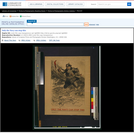
Poster showing a florid German soldier, wearing pirate skull-and-crossbones and brandishing a bloody sword as he wades in a tide of women's and children's bodies. Printed by the U.S. Navy Publicity Bureau, N.Y. The U.S. Navy Publicity Bureau gratefully acknowledges its indebtedness to the New York Herald for the reproduction of Mr. Rogers' cartoon. Forms part of: Willard and Dorothy Straight Collection.

Within twenty-four hours of the attack on the World Trade Center on September 11, 2001 politicians, artists, and cultural critics had begun to ask how to memorialize the deaths of thousands of people. This question persists today, but it can also be countered with another: is building a monument the best way to commemorate that moment in history? What might other discourses, media, and art forms offer in such a project of collective memory? How can these cultural formations help us to assess the immediate reaction to the attack? To approach these issues, “Out of Ground Zero” looks back to earlier sites of catastrophe in Germany and Japan.
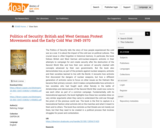
The Politics of Security tells the story of how people experienced the cold war as a war. It is about the impact of the cold war on political cultures. This crucial issue is often forgotten in historical memory. In particular, the book follows British and West German anti-nuclear-weapons activists in their attempts to campaign for and create security after the destruction of the Second World War, and how their own version of security clashed with concepts advanced by their own governments. But the book also demonstrates how, as part of the protests against nuclear weapons, activists and their societies learned to live with the Bomb: it recounts how activists first discovered the dangers of nuclear weapons, but how a different generation of activists came to focus on other issues as the Vietnam War became their primary concern. And it makes comprehensible how activists in two societies who had fought each other fiercely in the battle of dictatorships and democracies of the Second World War could now come to see each other as part of a common campaign. Fundamentally, with its transnational approach, the book highlights how these two societies drew on very similar arguments when they came to understand the cold war through the prism of the previous world war. The book is the first to capture in a transnational fashion what activists did on the marches and what it meant to them and to others. The book thus reminds us that threats are not merely out there, but that they need to be created in a political process that involves struggles for power and contestation.
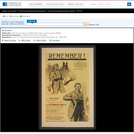
Picture of a German soldier (a Hun) carrying a torch and a bloody knife, and a salesman. They are one and the same person. Translation of title: Remember! Signed: F. Gottlob. Another issue: POS - Fr .E26, no. 2 (with text in French). Promotional goal: Fr. J49. 1919. Item is no. 149 in a printed checklist available in the Library of Congress Prints and Photographs Reading Room.
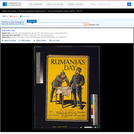
Poster showing the Kaiser and the King of Romania arguing while examining a map. Caption: The two forces. Kaiser: "So you, too, are against me! Remember, Hindenburg fights on my side." King of Roumania [sic]: "Yes, but freedom and justice fight on mine." Reproduced by special permission of the proprietors of "Punch." Title from item.
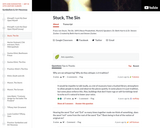
Franz von Stuck, The Sin, 1893 (Neue Pinakothek, Munich) Speakers: Dr. Beth Harris & Dr. Steven Zucker. Created by Beth Harris and Steven Zucker.
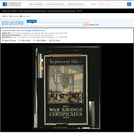
Poster showing German soldiers overseeing slave labor in a factory, and whipping one of the workers. B3002 Wt 5852/2598 10M 6/18. E3114. Title from item.

21G.031 examines the terms “avant garde” and “Kulturindustrie” in French and German culture of the early twentieth century. Considering the origins of these concepts in surrealist and dadaist literature, art, and cinema, the course then expands to engage parallel formations across Europe, particularly in the former Soviet Union. Emphasis on the specific historical conditions that enabled these interventions. Guiding questions are these: What was original about the historical avant-garde? What connections between art and revolution did avant-garde writers and artists imagine? What strategies did they deploy to meet their modernist imperatives? To what extent did their projects maintain a critical stance towards the culture industry?
Surveying key interventions in the fields of poetry, painting, sculpture, photography, film, and music, the readings also include signal moments in critical thought of the last century. Figures to be considered are: Adorno, Aragon, Bataille, Beckett, Brecht, Breton, Bürger, Duchamp, Eisenstein, Ernst, Jünger, Greenberg, Kandinsky, Malevich, Mayakovsky, and Tzara. Taught in English, but students are encouraged to consult original sources when possible.
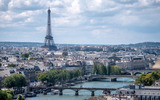
Drawn from Wheelan's 2019 work published by Norton, this reading provides a brief and engaging introduction to economics for high school students and beyond.See bottom half of document for Spanish version.
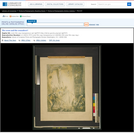
Allegory showing the figure of Liberty pointing to a crucifix hanging on a wall in church and towards German soldiers looting the church as Allied soldiers advance on the Germans.